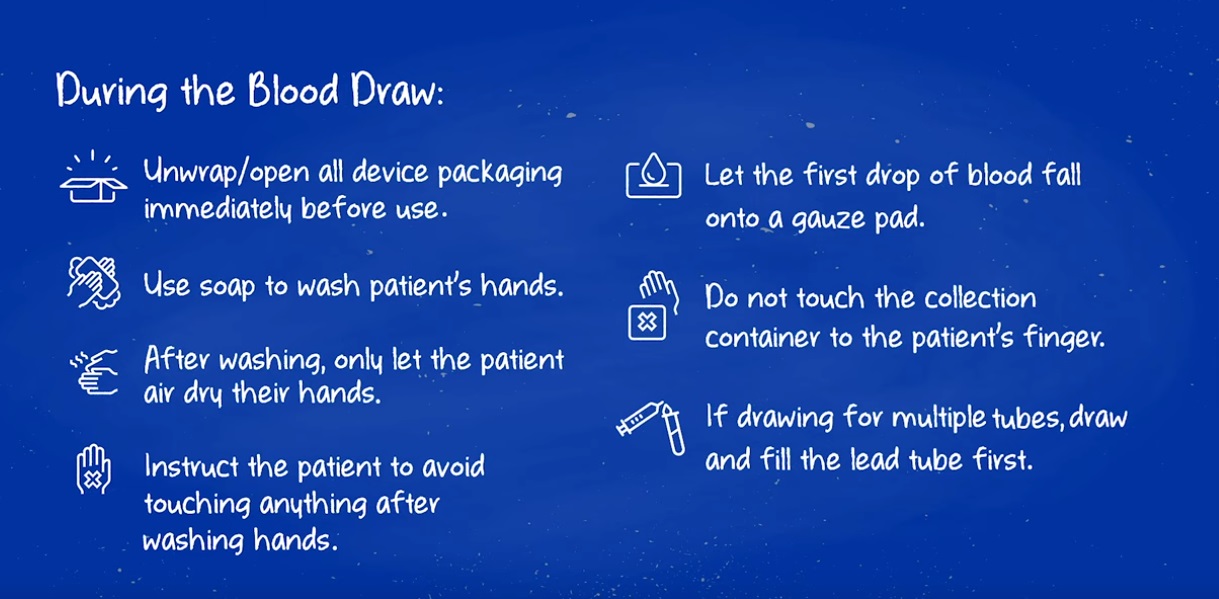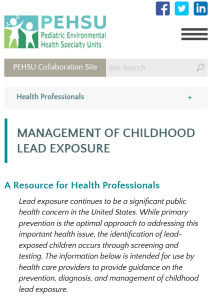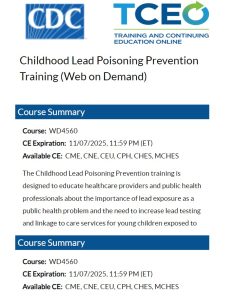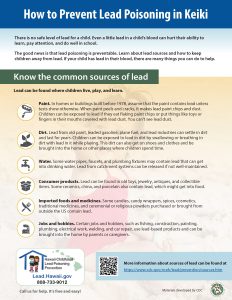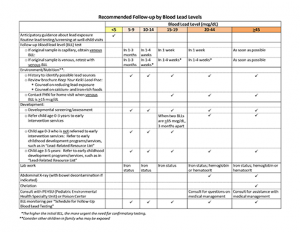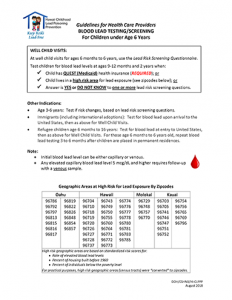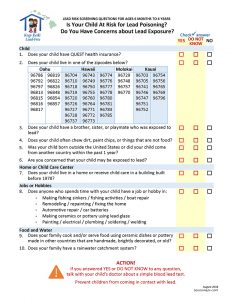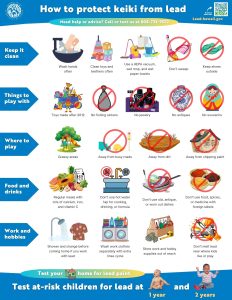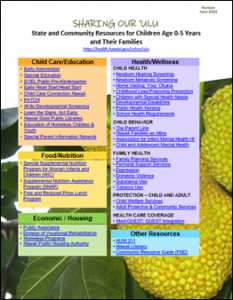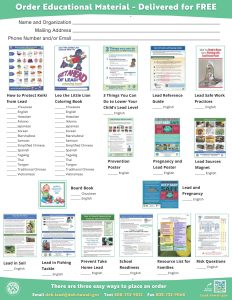
How Big is the Problem?
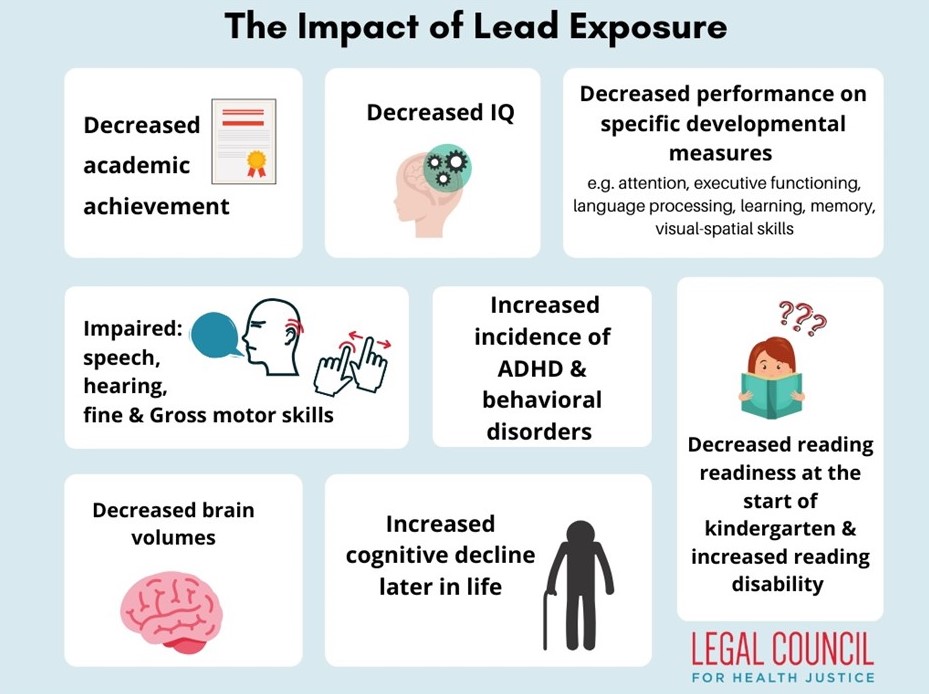 Even a small amount of lead in a child’s blood can inhibit their ability to learn, pay attention, and succeed in school. Hawaii data from 2018 to 2023 shows that each year an average of 316 (2.0%) of all tested children under the age of six (6) years had lead in their blood above the CDC Reference Level of 3.5 mcg/dl. However, the true prevalence of lead poisoning in Hawaii is not known since only 29.3% of children under the age of three (3) were tested in 2023. Helping families prevent lead exposure is the best way to help a child reach their full potential.
Even a small amount of lead in a child’s blood can inhibit their ability to learn, pay attention, and succeed in school. Hawaii data from 2018 to 2023 shows that each year an average of 316 (2.0%) of all tested children under the age of six (6) years had lead in their blood above the CDC Reference Level of 3.5 mcg/dl. However, the true prevalence of lead poisoning in Hawaii is not known since only 29.3% of children under the age of three (3) were tested in 2023. Helping families prevent lead exposure is the best way to help a child reach their full potential.
Where is Lead Found?
There are many types of lead sources in Hawaii like old paint, soil, dust, old toys, jewelry, antiques, souvenirs, fishing tackle, keys, dishes, food, spices, water, jobs, and hobbies. The wide variety of possible lead sources make risk-based screening challenging. The questionnaires need to be long and time-consuming to be comprehensive enough to avoid leaving a lead-exposed child untested. Geographic targeting is even more difficult in Hawaii due to limited data from low testing rates and a lack of historical data. Children with lead in their blood above the CDC reference level who are not tested miss the opportunity for identification and removal of the lead source and educational interventions to lessen the effects of lead. In addition, other children can be exposed to that lead source if it is not identified and removed.
Who Should I Test?
The current Hawaii Childhood Lead Poisoning Prevention Program (HI-CLPPP) risk-based system uses a screening questionnaire for families that combine risk-based questions with high-risk zip codes. A recent study by the University of Hawaii Center on the Family (UH COF) funded by HI-CLPPP showed that 43% of children in Hawaii with lead in their blood above the CDC reference level do not live in high-risk zip codes. After attempting to validate risk systems informed by best practices from across the United States, UH COF recommended HI-CLPPP consider universal testing at ages 1 and 2. The current risk-based system is under review.
In the interim, health care providers can continue to use the current risk-based system or choose to test all children according to EPSDT requirements for children on Medicaid/MedQUEST. Medicaid/MedQUEST covers testing with ZERO copayment/coinsurance at the ages shown below, but private insurance may require a copayment/coinsurance. Health care providers are reminded to use appropriate coding (e.g., suspicion of lead exposure) when ordering a blood lead test to ensure coverage for patients.
EPSDT/Medicaid/QUEST requires ALL children to be tested:
- ONCE between 9 and 12 months, and
- AGAIN at 2 years, and
- Between 3 and 6 years if never tested before
Children exposed to lead do best when they get help as soon as possible, so it is important to test children for lead at recommended ages AND any time there is a provider or caregiver concern. Children who recently moved to the United States or live in the same household as a lead-exposed child should be tested right away.
Why Kids Don’t Get Tested?
Health care providers are urged to make it as easy as possible for families to get an initial lead test. Combine with other blood tests and perform the test in the office when possible. Capillary tests can return false positive results, so it is important to advise families of this possibility and emphasize the need to have a confirmatory venous test if the result is at or above 3.5 mcg/dl. Simple steps can help avoid false positive results. Watch this video for more details.
HI-CLPPP is here to support and partner with health care providers to prevent children from being exposed to lead, identify children already exposed to lead so the source can be removed, and link families with recommended services.
HI-CLPPP will call your office when a child has a result at or above 3.5 mcg/dL. If you would like to discuss a patient, you can call us at 808-733-9012. For questions or concerns that don’t include patient information, you can also text us at 808-733-9012.
Resources for Health Care Providers
Referrals for Families
Early Intervention (0-3 yrs) – Department of Health (automatic eligibility with venous level of 10 mcg/dl)
Special Education (3-5 yrs) – Department of Education
Hi’ilei Developmental Screening Program – Department of Health
Nutritional Support for Children (WIC) – Department of Health
Social Support for Caregivers – Family Hui
Problem Solving and Support – The Parent Line
Additional Information
Developmental Milestones – Centers for Disease Control and Prevention
Latest Recalls – Applesauce Packets Cinnamon Other Products
Information About Lead in Catchment Water – Safe Drinking Water Branch
Lead Hotline – National Lead Information Center
Lead Poisoning Information – Hawaii Poison Center






